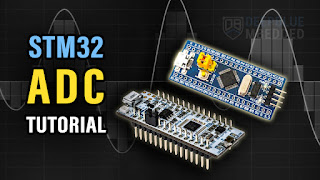How to eeprom auto send when restart FPGA board?
Short answer: an EEPROM won’t “auto-send” anything by itself. It’s passive. On every restart, your FPGA must actively read it and then transmit the data (UART/SPI/I²C/Ethernet… whatever “send” means for you). Here’s a solid, repeatable way to do that.
What you need to build
-
Power-on/reset sequencer
-
Hold your logic in reset until clocks are stable (PLL
locked). -
Give the EEPROM a little time to wake (typ. 1–10 ms) or poll for ACK.
-
Optional: debounce a “BOOT” GPIO to force/skip sending.
-
EEPROM reader
-
Pick the correct bus:
-
I²C (24xx): 7-bit device addr (usually
0b1010xxx), 1- or 2-byte word address. -
SPI (25xx): opcodes like
0x03(READ), 24-bit address.
-
-
Implement a simple burst read FSM that pulls a contiguous region (e.g., header + payload + CRC).
-
Transport/transmitter
-
Send the bytes where they need to go:
-
UART for logs/host (easy).
-
SPI if you’re feeding another MCU/FPGA.
-
AXI-Stream/FIFO to internal logic.
-
-
Add a small FIFO between reader and transmitter to decouple timing.
-
Verifier (optional but recommended)
-
Put a 2–4-byte length and CRC at the start of EEPROM so you can validate before sending.
I²C EEPROM read flow (24xx family)
-
START
-
Send device address + W
-
Send word address (1 or 2 bytes)
-
REPEATED START
-
Send device address + R
-
Read N bytes, ACK each byte, NACK the last
-
STOP
Notes
• Reads can usually cross page boundaries (page limits apply to writes).
• Some devices need tPU (~ms) after power-up; polling for ACK is the robust way.
• SDA/SCL are open-drain. Use pull-ups (2.2–10 kΩ). Respect bus speed (100/400/1 MHz).
SPI EEPROM read flow (25xx family)
-
CS↓, send 0x03 (READ)
-
Send 24-bit address
-
Clock out N bytes (dummy 0x00 on MOSI)
-
CS↑
Minimal RTL blueprint (pseudo-Verilog)
That’s the whole idea in ~30 lines: wait → read EEPROM → stream out. Swap uart_tx with your actual destination (SPI master to a companion MCU, AXI-Stream into logic, etc.).
Using a soft CPU (often faster to finish)
If you have Zynq/SoC FPGA or don’t mind a tiny soft core:
-
Start a MicroBlaze / Nios II / PicoRV32 at reset.
-
Use vendor I²C/SPI driver:
-
Read header
{len, crc}at address 0. -
Burst-read payload into BRAM.
-
Validate CRC.
-
Write out via UART/SPI/Ethernet.
-
-
Pros: fewer HDL corner cases (I²C clock stretching, retries, timeouts) and easier updates later.
Practical bring-up checklist
-
Clocks/reset: Hold everything until PLLs lock; then add an extra few ms or ACK-poll the EEPROM.
-
Pull-ups: I²C needs them. Keep traces short; 4.7 kΩ @ 3.3 V is a safe start.
-
Addressing: 16-bit vs 8-bit word address; 7-bit vs “8-bit” datasheet notation (shifted).
-
Retries: If no ACK after power-up, retry every ~100–500 µs until a timeout.
-
Throughput: UART is slow; if you must send KBs at boot, prefer SPI or a parallel stream.
-
EMI: For SPI, keep SCK clean; for I²C, mind slew rates and bus capacitance.
-
Validation: Add a magic number & CRC in EEPROM to avoid blasting garbage.




评论
发表评论